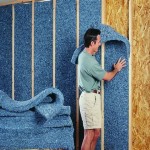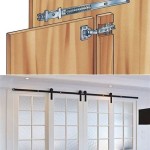Why Insulate Interior Walls?
Insulating interior walls helps to reduce energy bills by increasing the efficiency of heating and cooling systems. It prevents heat loss or gain, increases comfort levels indoors, cuts down on noise pollution, and can even improve indoor air quality.
Insulating interior walls also helps to prevent mold and mildew growth, resulting in a healthier living environment. The insulation adds structural strength to the walls, making them more resistant to damage and helping to maintain the integrity of the structure.
Steps for Insulating Interior Walls
The following steps will help you insulate interior walls that are already drywalled:
- Choose the right insulation material: Fiberglass batt, cellulose, or spray foam are all good choices for insulating interior walls.
- Remove the drywall: Take down the existing drywall and expose the framing. This will allow you to measure the space and choose the appropriate insulation.
- Cut the insulation to size: Use a sharp utility knife to cut the insulation to the correct size. Make sure the pieces fit tightly between the studs.
- Install the insulation: Place the insulation between the studs and press it into place. Make sure the insulation is firmly in place and there are no gaps.
- Secure the insulation: Use a stapler or nails to secure the insulation in place. Make sure the insulation is firmly in place and there are no gaps.
- Reinstall the drywall: Replace the drywall and secure it to the framing with screws.
Tips for Insulating Interior Walls
Here are a few tips to help you get the most out of your insulation project:
- Choose the right insulation for your needs: Different types of insulation have different R-values, so make sure you select the right one for your needs.
- Use caulk or sealant to fill in any gaps: Use caulk or sealant to fill in any gaps between the insulation and the framing.
- Cover the insulation with drywall: Cover the insulation with drywall to protect it from moisture and to keep the insulation in place.
- Check for air leaks: Check for air leaks around windows and doors and use caulk to fill any gaps.
- Schedule regular inspections: Schedule regular inspections to make sure the insulation is in good condition.
Conclusion
Insulating interior walls is a great way to improve the energy efficiency of your home and reduce your energy bills. By following the steps outlined above and using the tips provided, you can easily insulate interior walls that are already drywalled.












/cdn.vox-cdn.com/uploads/chorus_image/image/66559677/TOH_3203_COVE_ch7.0.jpg)


Related Posts








